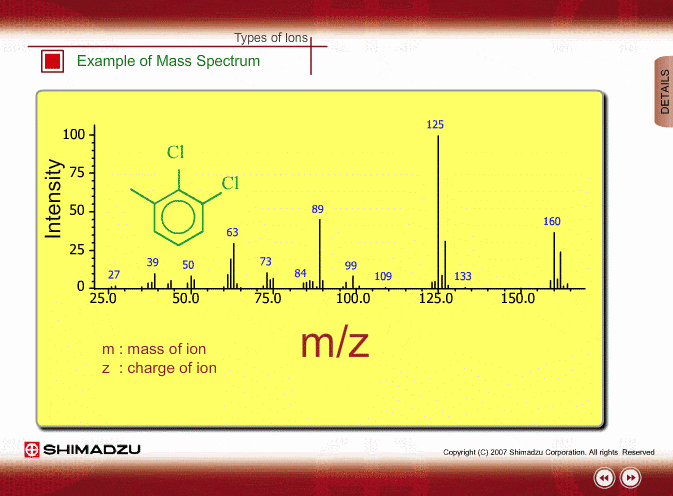Example of Mass Spectrum
Various types of ions are produced when molecules are ionized in an ionization box. A Mass Spectrum is a graphical representation of the mass distribution of the ions. From the mass spectrum, we can obtain information about molecular weight and molecular structure, and identify unknown samples. This slide illustrates some important types of ions appearing in a spectrum, by citing an example of the spectrum of 2,3-Dichlorotoluene. The horizontal axis denotes m/z, where m is the mass of ion in a unit of u and z is the number of charges of ion. In general, the ionization methods used by GC/MS produce single-charged ions, that is z=1; therefore, m/z can be regarded as the mass of ion.

Next >> Base Peak


